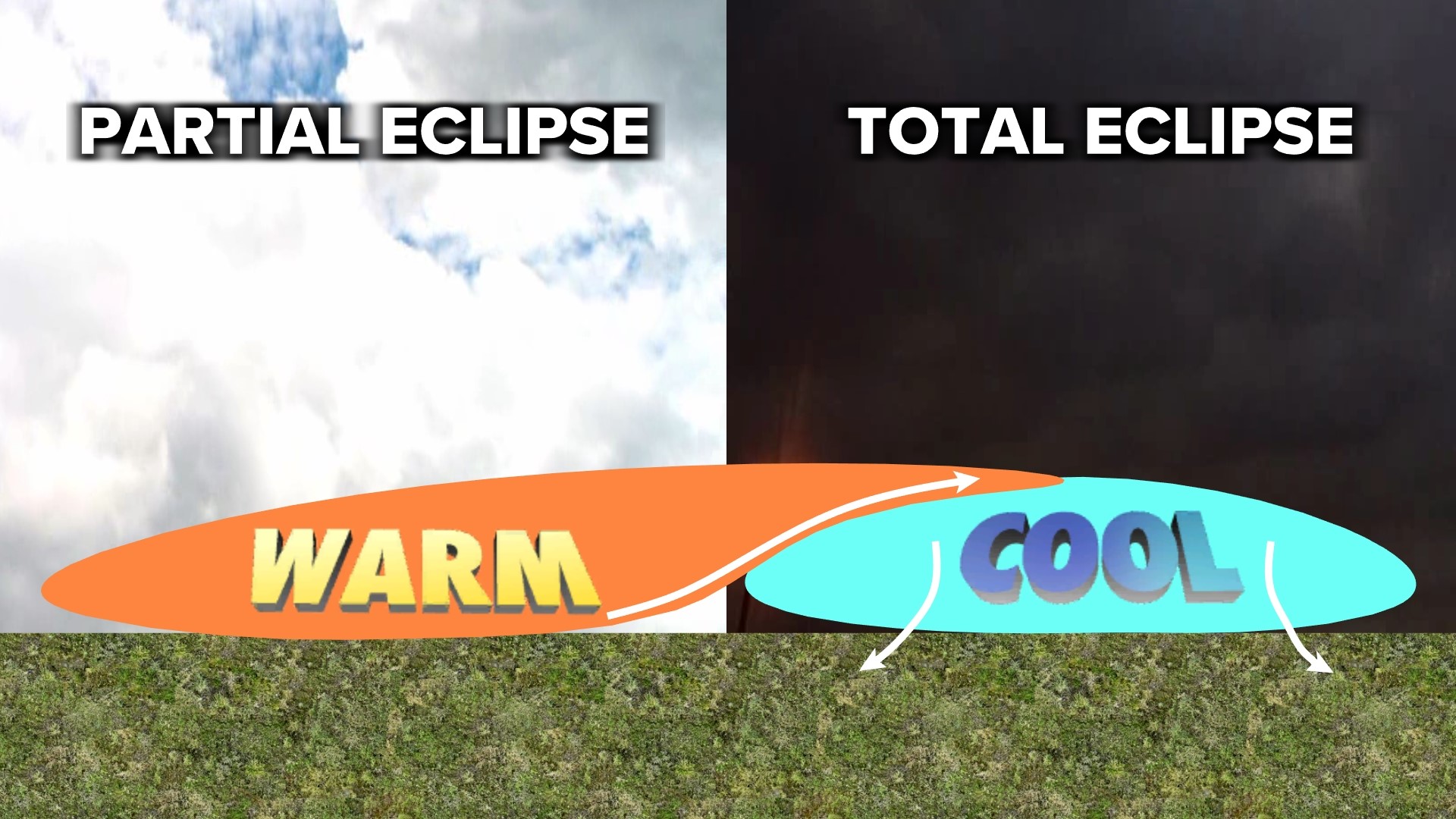TOLEDO, Ohio — With the total solar eclipse just over three weeks away, you may be making final preparations for viewing this once-in-a-lifetime spectacle. Perhaps you've wondered what the weather will bring on April 8. Though the forecast remains highly uncertain this far out, climatology can provide insight into what early April usually brings. Not only will the weather impact viewing conditions, but the eclipse will affect the weather, changing temperatures, winds, and cloud formations.
Sunny weather will provide optimal viewing conditions for locals and tourists alike, providing a stunning view of the sun's corona during totality. Though April 8 is still far outside the range of the 10-day forecast, climatology can provide clues as to what the weather may bring in a little over three weeks. April 8, 2023 featured brilliant sunshine and seasonable temperatures in the upper-50s.
While another fully sunny day is statistically unlikely, eclipse fanatics can hope for a repeat performance on April 8. Early April is often a wild card weather-wise, bringing a wide variety of atmospheric conditions. April 8, 2022 featured overcast skies with light showers.
Prior to that, April 8, 2021 brought a summer setting with highs close to 80 degrees and a few thundershowers. While these spring storms delivered nearly a quarter inch of rainfall, some sunshine made an appearance during the day. April 8, 2020 also came with mild weather with highs in the mid-70s and a few isolated thundershowers.
Early April can bring a mixed bag of weather conditions, and time will tell what eclipse viewers can expect on April 8. You can trust the WTOL 11 weather team for the latest forecast as the big day draws closer.
The total solar eclipse may impact our weather conditions as the moon's shadow obscures the sun. During totality, the sky will turn dark during the middle of the afternoon, altering weather conditions. Due to temporary loss of sunlight, temperatures will drop during the eclipse, falling 30 to 60 minutes before totality and remaining relatively low after the eclipse before rebounding as the sun returns.
Typically, temperatures drop 4 to 8 degrees before and during a solar eclipse. During the 2017 solar eclipse, many North Carolina cities experienced a notable drop in temperatures. Greensboro only experienced 93.9% of a total eclipse, yet still saw a massive 12 degree drop in temperatures. Winston-Salem saw an 8 degree drop in temperatures with 94.2% of the sun obscured. Lastly, Raleigh experienced a 6 degree temperature fall with 92.8% of the Sun hidden.

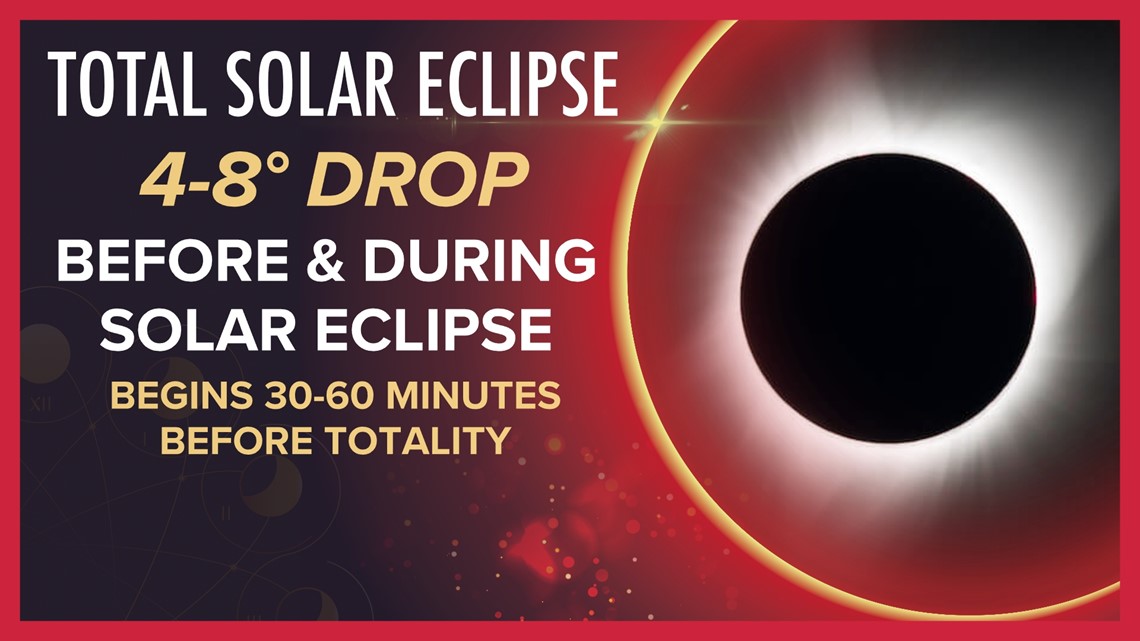
Many cities in the direct path of totality in Illinois and Kentucky experienced a noticeable drop in temperatures slightly before, during, and after totality followed by a late day rebound.
The Aug. 21, 2017 total solar eclipse reached totality shorty after 1 p.m., a time when temperatures typically soar during peak daytime heating. During the eclipse, temperatures dropped significantly before rising ahead a couple hours after totality.
One of the more notable temperature drops occurred in Carbondale, Illinois. During the late morning, temperatures climbed to 89 degrees, dropping to 86 during the eclipse and 84 after totality. Once the Sun returned, temperatures spiked back to 89 at 3 p.m.

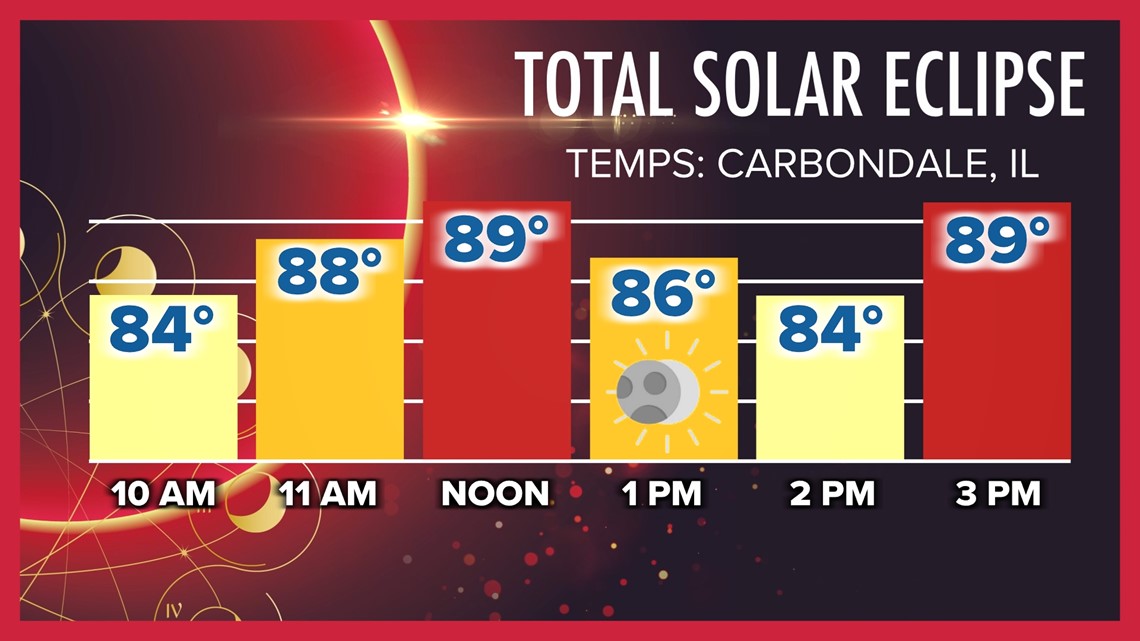
In Marion, Kentucky, temperatures surged to 91 degrees by noon, dropping to 87 during and after the eclipse and rebounding to 92 at 3 p.m. upon the sun's return. These 2017 examples indicate the amazing impact the darkness of a total solar eclipse can have on temperatures.
Additionally, wind speeds briefly diminish during totality, redeveloping after the sun returns. Lastly, temperature gradients caused by an eclipse cooldown can spawn a few clouds and potentially even pop-up thunderstorms.
An area in totality will turn cooler due to the darkness while an adjacent location outside of the path will remain warmer with some sunlight still affecting surface temperatures. Due to this temperature, warm, buoyant air will rise over cool, dense air.

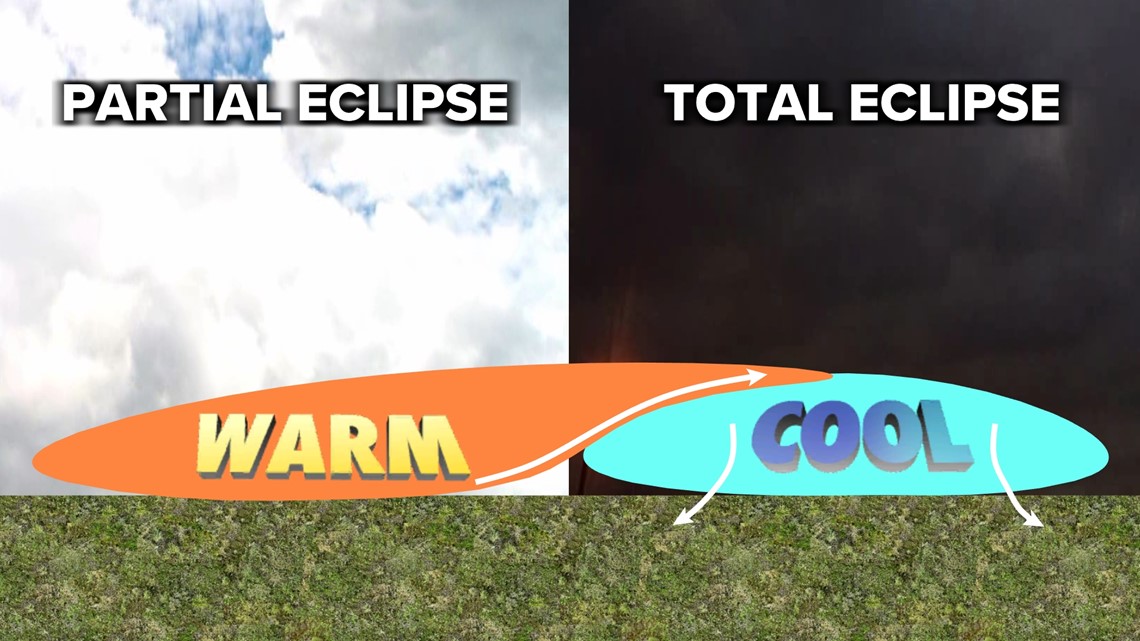
This temperature gradient can cause the development of a few clouds and potentially even pop-up showers or storms. This scenario is by no means a guarantee, but the atmospheric conditions that an eclipse creates could possibly alter cloud cover and even induce precipitation. Of all these meteorological impacts, the drop in temperatures is the most significant.

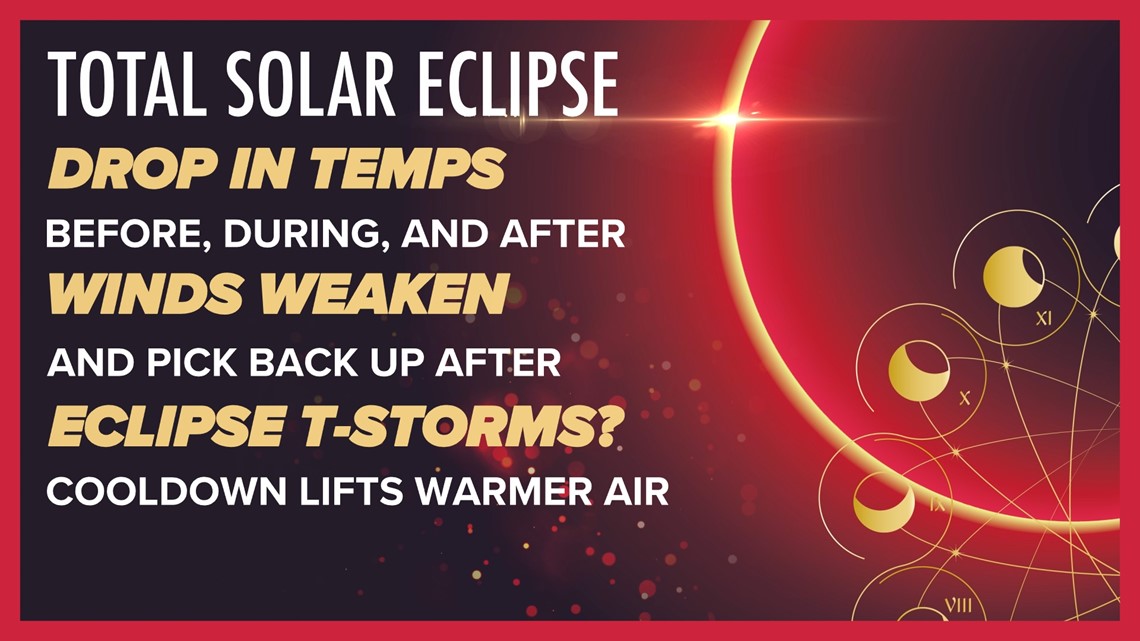
Though the specific weather forecast for April 8, 2024 remains uncertain, climatology can provide insight into what you can expect for viewing conditions. Additionally, the eclipse itself may impact atmosphere and weather conditions in northwest Ohio. Stay tuned to the WTOL 11 weather team for updates on the total solar eclipse, which is now just a little over three weeks away.
PLAYLIST: MORE TOTAL SOLAR ECLIPSE COVERAGE FROM WTOL 11

